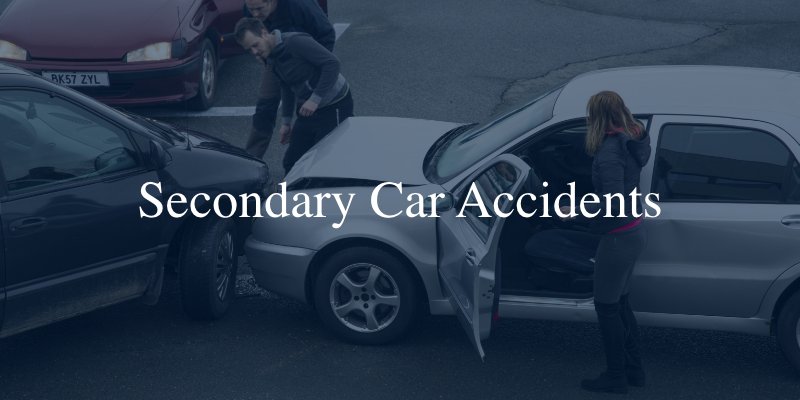What Are Secondary Car Accidents?
Request a Free ConsultationA car accident scene is frightening and chaotic, but a bad situation becomes far worse when there’s a second crash that follows. A secondary car accident dramatically increases the risk of serious or catastrophic injuries. According to the National Highway Traffic Safety Administration (NHTSA), one out of every five car accidents with injuries is a secondary collision. Worse, the number of injuries in secondary car crashes is likely underreported since most states do not keep separate data on secondary car accident injuries and fatalities.
What Is a Secondary Car Accident?

The NHTSA describes secondary car accidents in the following way:
“A crash that occurs as a result of an original crash either within the crash scene or within the queue or backup in either direction.”
NHTSA data shows that secondary car accidents occur most often on interstate highways and freeways, where vehicles travel in the same direction on multiple traffic lanes. The second most common location for secondary car accidents is in intersections. Rear-end collisions and side-swipes are the two most common types of secondary car accidents.
How Do Secondary Car Accidents Happen?
Secondary car accidents often occur on interstate highways because the high rate of speed on these roadways which doesn’t always allow drivers adequate stopping time to avoid colliding into an accident that occurs directly in front of them. The risk of secondary accidents increases when drivers tailgate or follow too closely. In the worst cases, secondary accidents become multi-car pileups or chain-reaction accidents.
The second most common location for secondary car accidents is in intersections. For example, when a rear-end collision at an intersection propels the front vehicle forward into the intersection where it’s hit by a vehicle entering the intersection from another direction.
Another common cause of secondary accidents occurs when drivers become distracted by looking at an accident as they pass by, resulting in another accident. A unique phenomenon called “target fixation” happens when drivers accidentally steer in the direction of something that catches their attention.
What Types of Injuries Occur in Secondary Collisions?
When a secondary collision occurs, the injuries are often serious or catastrophic. The vehicle occupants often don’t have time to brace themselves because they are distracted by the first accident—either as an accident victim or because their attention was diverted by looking at an accident scene. In some cases, the victims of the first accident receive further injuries in a secondary collision. Common injuries in secondary accidents include the following:
- Single or multiple fractures
- Whiplash and other neck injuries
- Back injuries
- Head injuries/traumatic brain injuries
- Internal organ damage
- Lacerations, bruises, and abrasions
- Soft tissue injuries to wrists, ankles, knees, and shoulders
- Burns
- Facial trauma
In some cases, an injury victim survives an initial accident only to become fatally injured in a secondary collision.
Determining Fault in a Secondary Car Accident
After an accident with secondary or multiple collisions, it often takes a thorough investigation and consultation with accident reconstruction experts to determine who is at fault or the percentage of fault contributed by each driver. Even in no-fault insurance states, some injury victims can recover compensation from at-fault drivers, depending on the terms of their insurance contracts and the degree of injury. In some cases, a third party could also contribute to the fault in a secondary car accident; for example, if a negligent road maintenance agency left debris on the road or failed to repair a pothole, or if the accident happened due to a defective car part. Anyone involved in a secondary car accident with injuries should seek legal counsel through a car accident attorney in South Jersey with experience in this type of investigation.
